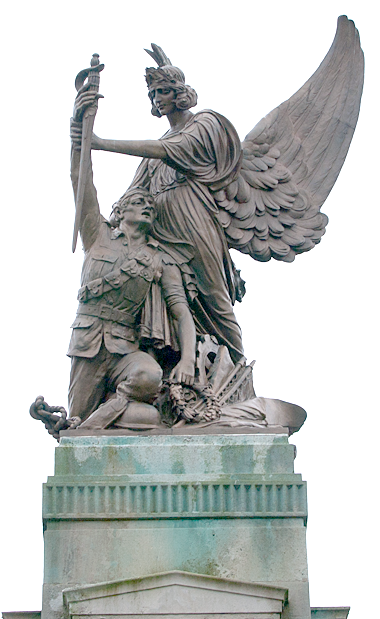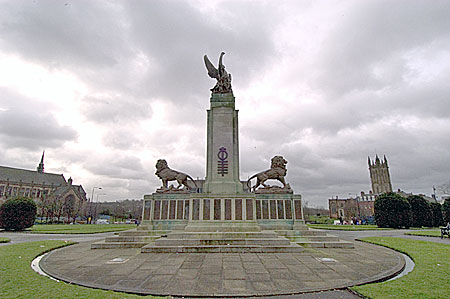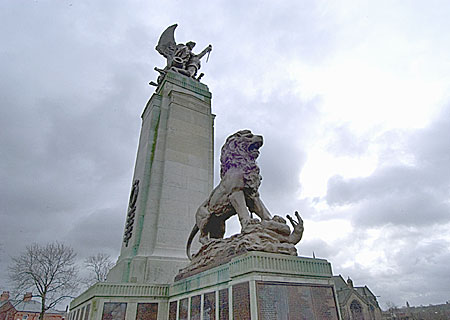|
|||||||||
CONTENT Introduction |
ANATOMY OF A MEMORIAL The Reverend W.A. Parry, in the act of dedication, prayed that the memorial ‘may serve to remind us – as we think of the noble deeds and sacrifices of our brothers – of our own duty to Thee our God, to our Country, to our town, and to one another’. The memorial structure echoes and reinforces this hierarchy of thought. The names of the 1,512 dead are listed alphabetically on thirty-eight bronze panels, which the spectator can easily see. Above these are two huge bronze lions representing the British Empire, one in combat with the serpent of evil, the other having triumphantly crushed it. The central column is surmounted by a bronze group which depicts a wounded soldier holding a spray of laurel, passing a sword of justice to a standing female figure representing Peace. The dead thus literally uphold and support the values of Empire, service and honour and it is through them that these values are to be understood. At the end of the ceremony, according to the programme ‘the relatives of those whose Names are inscribed on the Tablets will view the Memorial – Children first’. The young, whose memories would be most easily impressed and whose loss was possibly the most inexplicable, were to be the main object of the memorial. |
 The message of the bronze group depicting a wounded soldier holding a spray of laurel and passing a sword of justice to the female figure representing Peace is clear - peace is the gift of the dead. |
 |
 |
|
|
The memorial structure echoes and reinforces this hierarchy of thought. The names of the 1,512 dead are listed alphabetically on thirty-eight bronze panels. Above are two bronze lions representing the British Empire, one in combat with the serpent of evil, the other having triumphantly crushed it. |
One of the two bronze lions representing the British Empire; this one has triumphantly crushed the serpent of evil. |
|
| PEACE PLEDE UNION 1 Peace Pssage London N7 0BT | ||
